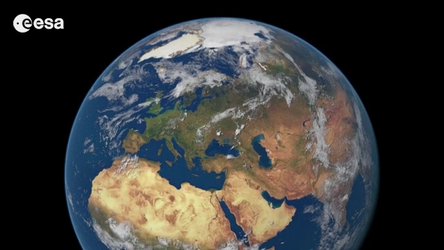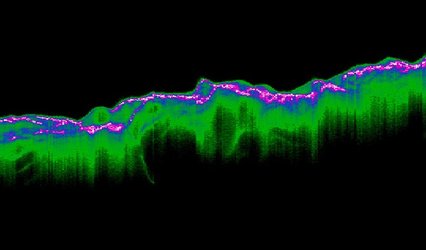CryoSat hits land
ESA’s ice mission is now giving scientists a closer look at oceans, coastal areas, inland water bodies and even land, reaching above and beyond its original objectives.
Launched in 2010, the polar-orbiting CryoSat was developed to measure the changes in the thickness of polar sea ice, the elevation of the ice sheets that blanket Greenland and Antarctica, and mountain glaciers.
The satellite’s radar altimeter not only detects tiny variations in the height of the ice, it also measures sea level and the sea ice’s height above water to derive sea-ice thickness with an unprecedented accuracy.
At a higher precision than previous altimeters, CryoSat’s measurements of sea level are improving the quality of the model forecasts. Small, local phenomena in the ocean surface like eddies can be detected and analysed.

Taking CryoSat a step further, scientists have now discovered that the altimetry readings have the potential to map sea level closer to the coast, and even greater capabilities to profile land surfaces and inland water targets such as small lakes, rivers and their intricate tributaries.
Radar altimeters have more difficulty doing this because, compared to open ocean measurements, the landscape surrounding inland water bodies is a lot more complex.
These had not been previously monitored with satisfying accuracy by conventional altimeters because the sensor footprints – about 5x5 km – were too large to detect subtle differences in the topography around small landforms.
CryoSat, however, has a resolution along its ground track of about 300 m.
In order to thoroughly investigate the possibilities offered by CryoSat over water, ESA recently began scientific exploitation projects coined ‘CryoSat+’.

Scientists are reprocessing large, raw and uncompressed sets of data coming directly from CryoSat to obtain new information on oceans, inland water bodies and land.
In the example pictured above, CryoSat’s altimeter made readings over central Cuba, extending north and south into the surrounding water.
The image clearly shows the difference between the bright radar reflections from the steady water and the elevated land.
For instance, near the edges of the island, points of high radar reflection are pictured in red. This is due to the more placid waters of the bay and over coral reefs.
Examples are also pictured over the Danube delta in eastern Romania, and the land-locked Issyk Kul lake in Kyrgyzstan.

“Thanks to CryoSat being operated over some inland water targets in high resolution mode, we were able to distinctly chart the contours of a flood that occurred last March at Rio Negro in the Amazon,” said Salvatore Dinardo, working for ESA on CryoSat+.
Jérôme Benveniste, the ESA scientist who initiated the project, continued, “We were able to emphasise the unique capability to see the floodwater extent under the forest canopy, where optical sensors or even imaging radars are blocked by the trees.”
Results from the project will be unveiled to the scientific community at the Third CryoSat User Workshop to be held in Germany at the Technical University of Dresden on 12–14 March.















 Germany
Germany
 Austria
Austria
 Belgium
Belgium
 Denmark
Denmark
 Spain
Spain
 Estonia
Estonia
 Finland
Finland
 France
France
 Greece
Greece
 Hungary
Hungary
 Ireland
Ireland
 Italy
Italy
 Luxembourg
Luxembourg
 Norway
Norway
 The Netherlands
The Netherlands
 Poland
Poland
 Portugal
Portugal
 Czechia
Czechia
 Romania
Romania
 United Kingdom
United Kingdom
 Slovenia
Slovenia
 Sweden
Sweden
 Switzerland
Switzerland































